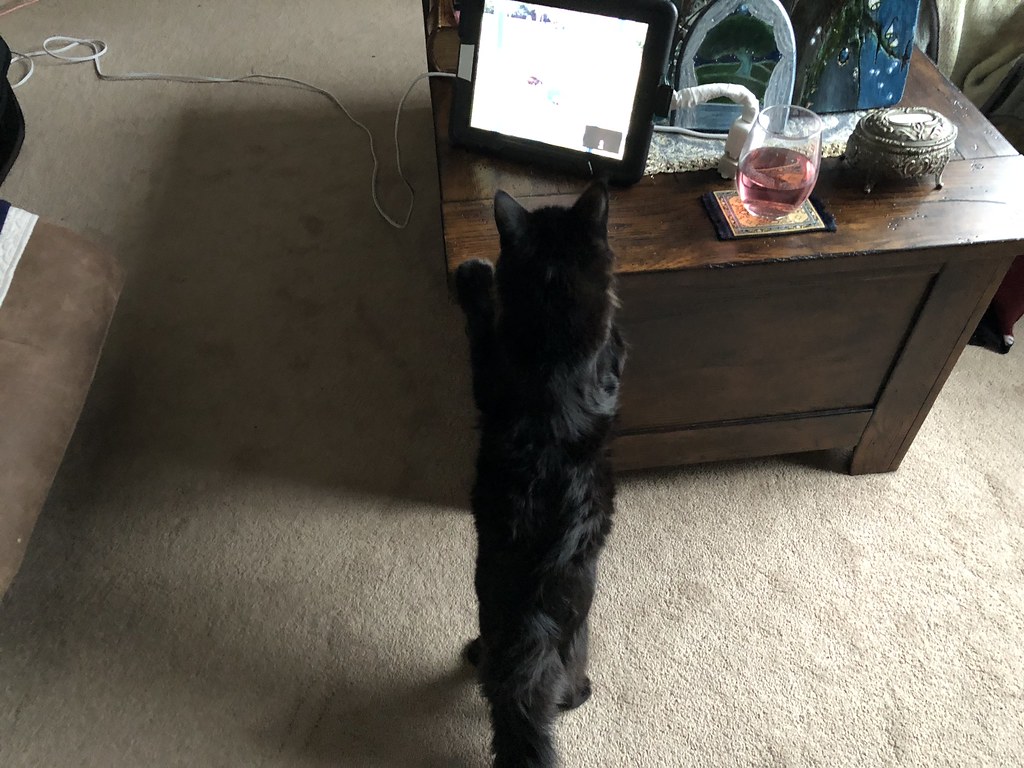Our furry friends are a source of joy and companionship, but they can also be a source of frustration when they start picking on our possessions. Whether it’s chewing on shoes, scratching furniture, or digging through the trash, pet paws can cause damage and create messes that are difficult to clean up. Fortunately, there are steps you can take to prevent your pets from picking on your possessions. In this article, we’ll explore some of the most effective strategies for keeping your belongings safe from curious claws and teeth.
1. “Paws Off! Tips for Preventing Your Pet from Destroying Your Belongings”
Pets are adorable and loving creatures that bring joy to our lives. However, they can also be destructive at times, especially when they are bored or anxious. If you are tired of coming home to chewed-up shoes or scratched furniture, here are some tips to prevent your pet from destroying your belongings.
Firstly, provide your pet with plenty of toys and activities to keep them entertained. Dogs and cats love to play, and if they don’t have enough stimulation, they will find their own entertainment, which may involve chewing or scratching your belongings. Invest in interactive toys, such as puzzle feeders or scratching posts, and rotate them regularly to keep your pet interested. You can also hide treats around the house for your pet to find, which will keep them occupied and mentally stimulated.
Secondly, create a designated space for your pet to relax in. This can be a crate, a bed, or a cozy corner of the room. By giving your pet their own space, they will feel more secure and less likely to destroy your belongings. Make sure the space is comfortable and has plenty of blankets and toys. You can also use pheromone sprays or diffusers to help your pet feel calm and relaxed in their space. Remember to praise and reward your pet when they use their designated space, as this will encourage them to continue using it. With these tips, you can prevent your pet from destroying your belongings and enjoy a happy, harmonious home with your furry friend.
2. “Protecting Your Possessions: How to Keep Your Furry Friend’s Paws at Bay”
One of the biggest challenges pet owners face is keeping their furry friend’s paws away from their possessions. Whether it’s scratching furniture or chewing on shoes, pets can cause a lot of damage. Luckily, there are several ways to protect your belongings without compromising your pet’s happiness.
Firstly, invest in some scratching posts or pads for your cat. Cats love to scratch, and providing them with a designated area to do so will prevent them from scratching your furniture. You can also try using double-sided tape or aluminum foil on the furniture to deter them from scratching. For dogs, provide them with plenty of chew toys to keep them occupied and prevent them from chewing on your shoes or other items. Additionally, make sure to keep any valuable items out of reach or in closed cabinets to prevent your pet from getting to them.
Another way to protect your possessions is to train your pet. Teach them basic commands such as “leave it” or “drop it” to prevent them from getting into things they shouldn’t. Consistency is key when it comes to training, so make sure to reinforce positive behavior and discourage negative behavior. Finally, consider using pet-friendly deterrent sprays or barriers to keep your pet away from certain areas or items. These sprays are safe for pets and can be used on furniture or other items to prevent them from being damaged. By following these tips, you can keep your furry friend’s paws at bay and protect your possessions at the same time.
3. “Stop the Scratching: Simple Strategies for Preventing Your Pet’s Paws from Damaging Your Home
One of the most common problems pet owners face is the damage their furry friends can cause to their homes. Scratching is a natural behavior for cats and dogs, but it can be frustrating when it leads to ruined furniture and scratched floors. Fortunately, there are some simple strategies you can use to prevent your pet’s paws from damaging your home.
First, invest in scratching posts or pads for your cat. Cats love to scratch, and providing them with a designated area to do so can save your furniture from destruction. Place the scratching post or pad in a location where your cat spends a lot of time, and encourage them to use it by placing treats or toys nearby. If your cat still insists on scratching your furniture, try using double-sided tape or aluminum foil to deter them. These materials feel uncomfortable on a cat’s paws and can discourage them from scratching in unwanted areas.
For dogs, keeping their nails trimmed is essential to prevent damage to your floors and furniture. Long nails can easily scratch hardwood floors and snag on upholstery. Regular nail trimming can also prevent painful ingrown nails and keep your dog’s paws healthy. If you’re not comfortable trimming your dog’s nails yourself, consider taking them to a professional groomer or veterinarian. Additionally, providing your dog with plenty of toys and chew bones can redirect their chewing and scratching behavior away from your furniture.
By implementing these simple strategies, you can prevent your pet’s paws from damaging your home and keep your furry friends happy and healthy. Remember, patience and consistency are key when training your pets to use scratching posts and chew toys. With a little effort and creativity, you can enjoy a scratch-free home and a happy pet. In conclusion, preventing your pet’s paws from picking on your possessions is a crucial aspect of responsible pet ownership. By following the tips and tricks outlined in this article, you can ensure that your furry friend is happy, healthy, and well-behaved. Remember, patience and consistency are key when it comes to training your pet, so don’t give up if you don’t see immediate results. With a little bit of effort and dedication, you can create a harmonious living environment for both you and your beloved pet. Happy training!

